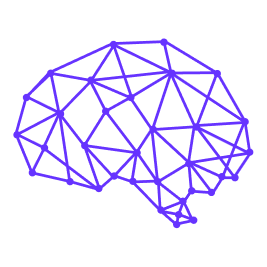Breaks – Or How Our Brains Work
We have a few rules about breaks among us trainers:
- 10 minutes break for every full hour.
- No reading or answering emails during a break.
- Not more than four hours of training per day, ideally in the morning.

When we learn things, our brains have to organise that knowledge. Older theories talk about our short-term memory, but I’m going to disregard that since the newer theories about the working memory are far more precise. One of them (after Alan Baddeley and Graham Hitch) consists of four different components to organise information:
- Central Executive: Decides where the other components focus the attention.
- Phonological Loop: Deciphers sounds and words. While not yet moved to long term memory, information gets repeated.
- Visuo-Spatial Scratchpad: Deciphers visual and spatial information, which also includes inner mind maps.
- Episodic Buffer: Creates packages (episodes) of deciphered information and moves them into long-term memory.
I highly recommend to dive a little deeper into that topic, it’s extremely fascinating.
Unfortunately, neither our working memory’s capacity nor its speed are limitless. And the more we learn in one lesson, the more packages our episodic buffer has to build and move and push to long-term memory. Which takes either energy or losses.
We learn new things, while the information we learned a few seconds or sometimes minutes earlier is filtered, parsed, transposed and then pushed to long-term.
But especially for bits of information that are not completely intuitive, that process of filtering, parsing and transposing – in other words: understanding – needs effort. And the more effort it takes, the less capacity our working memory has. And that leads to daydreaming, not paying attention or misunderstanding.
From time to time, we have to let our process for pushing learned things to long-term memory catch up before the road gets so busy that it blocks most things out. And that is, why breaks have value.

Breaks are not leisure time. Breaks are learning. Without breaks, there is far less learning. It doesn’t matter if we use breaks to close our eyes, if we get another coffee, if we have a chat with a person about lunch or another completely different topic. As long as we don’t make our working memory work too hard during the break, we can do whatever we want in that time.
Which leads to: if I catch participants reading and answering their work emails during breaks, I threat to kill the WIFI or take away their laptops. Well, I don’t have the power to do that, but the threat usually works nonetheless.
Answering emails during breaks:
- Kills the break, and with that the process of pushing information into long-team memory
- Is like actively forgetting half of what was just learned
- Shortens the attention span after the break
- Raises the needed effort to retain new things after the break, because the work stuff is occupying the working memory
Learning Types
In our experience there are three major learning types:
A) People who need someone to explain the world to them. (Structured training.)
B) People who research until they can explain the world themselves. (Semi-structured training.)
C) People who learn by solving a problem. (Unstructured training.)
Group A is the one for which trainings work best, of course. But since trainings have a structure and can give a far more holistic view (aka the big picture), there is also merit for groups B and C.
By the way: there are of course different models for differentiating learning styles, like VARK (visual, aural, read/write, kinaesthetic), or Honey & Mumford (activist, theorist, pragmatist, reflector). They are more on the theoretical side, although they give practical examples. People usually find themselves in more than one of those groups, and it’s a good way to become more self-aware about the own learning style.
But I’m going with my experience here when it comes to learning styles: the level of structure someone needs to skill up properly.
Trainings Are Jump-Starts
Of course, all three learning groups merge into each other. I was self-taught with the analytics tool Tableau for example, and for five long years, at that. I was also leaning very hard into group C and also B — learning by solving problems and reading tutorials. I thought I was an absolute pro, until I sat in my first training as a participant and discovered that I was indeed pretty good, but lacked a lot of basics.
When it’s the other way round, we first take part in a training, then experiment, the rest of the journey is far smoother.

And let me be clear: there is nothing wrong with self-teaching or working problems — it’s the natural way of learning. Trainings are unnatural. School is unnatural. Structured learning is unnatural. I say this without any judgement, as trainings can have their advantages and disadvantages.
Advantages:
- You don’t have to do everything on your own. There is someone who packages the knowledge in a form that is easy to consume.
- You are no guinea pig. What you will learn is proven to work.
- You get both the big picture and the very details of what you want to learn.
Disadvantages:
- The examples are usually not related to your personal situation or business. You need to transfer that new knowledge later on.
- The success of the experience heavily depends on the trainer, which you don’t have a lot of control over.
- There is a fixed time slot, during which you have to learn.
There is this old saying that you really know that you understood something when you can explain it to others. Groups B and C are usually really good at being able to explain things after they invested the time to read, watch and experiment. Group A on the other hand gets a jump-start with a training and is able to get there faster, especially when they fall into groups B or C afterwards and can build on the more holistic knowledge they gained.


